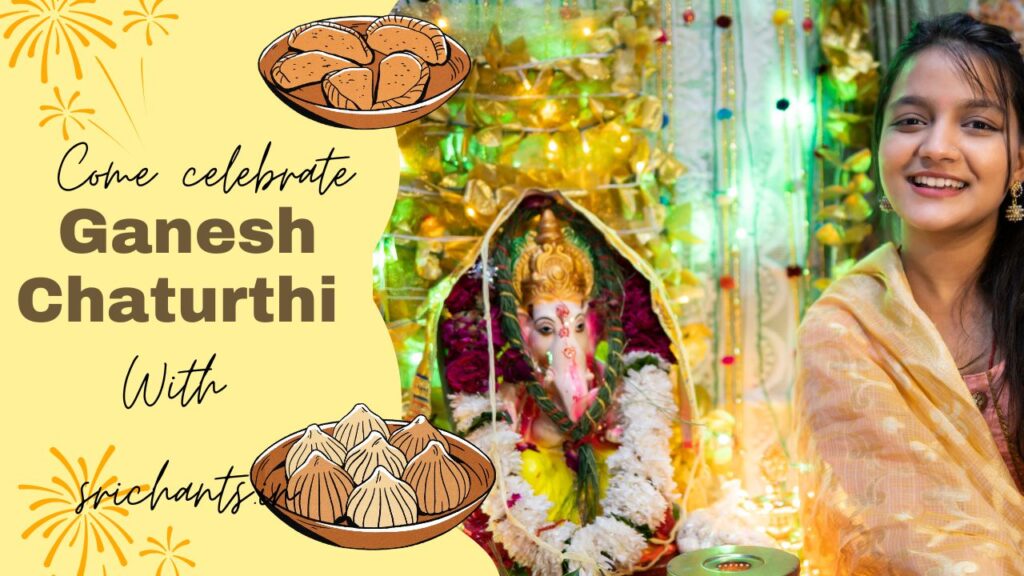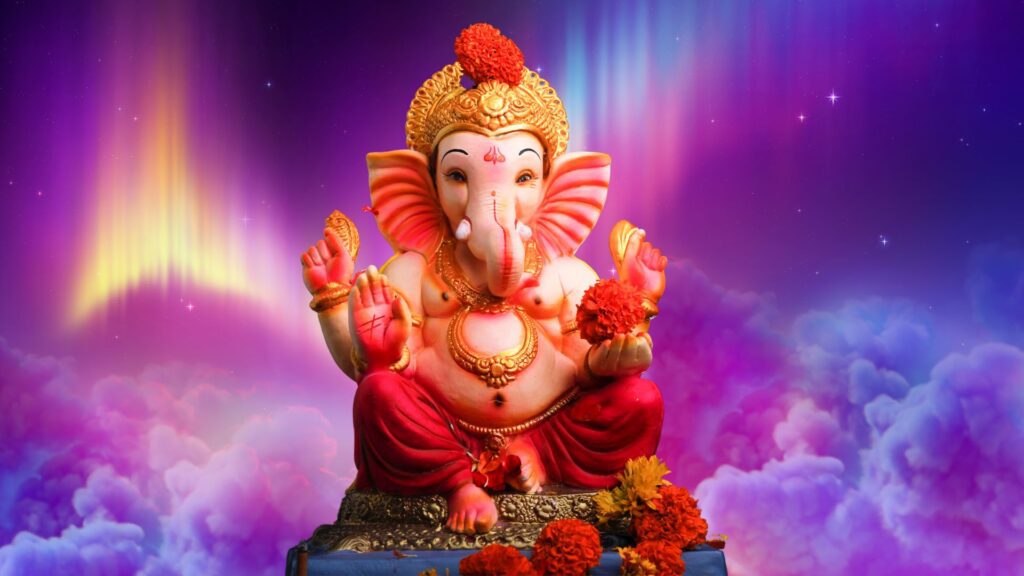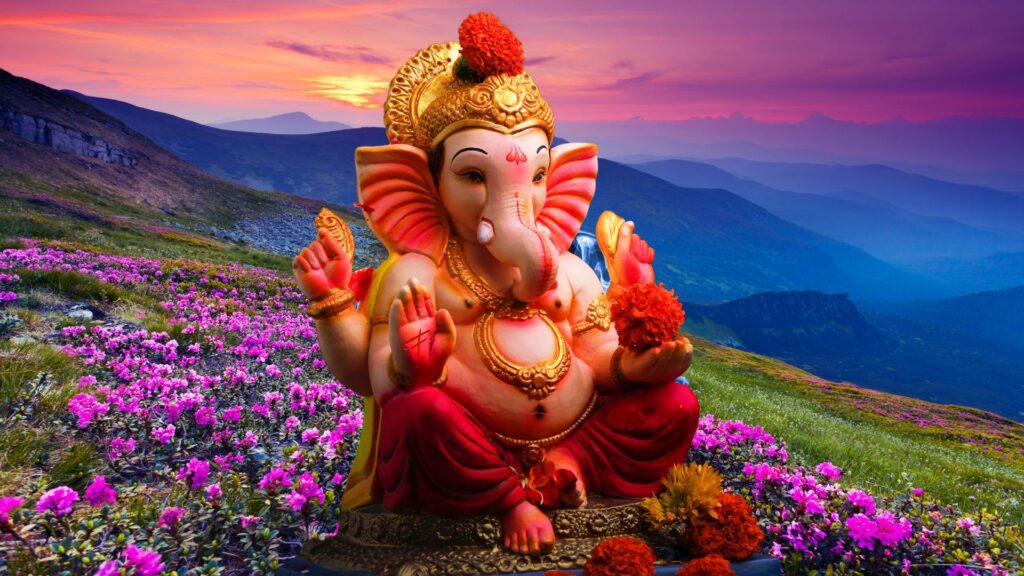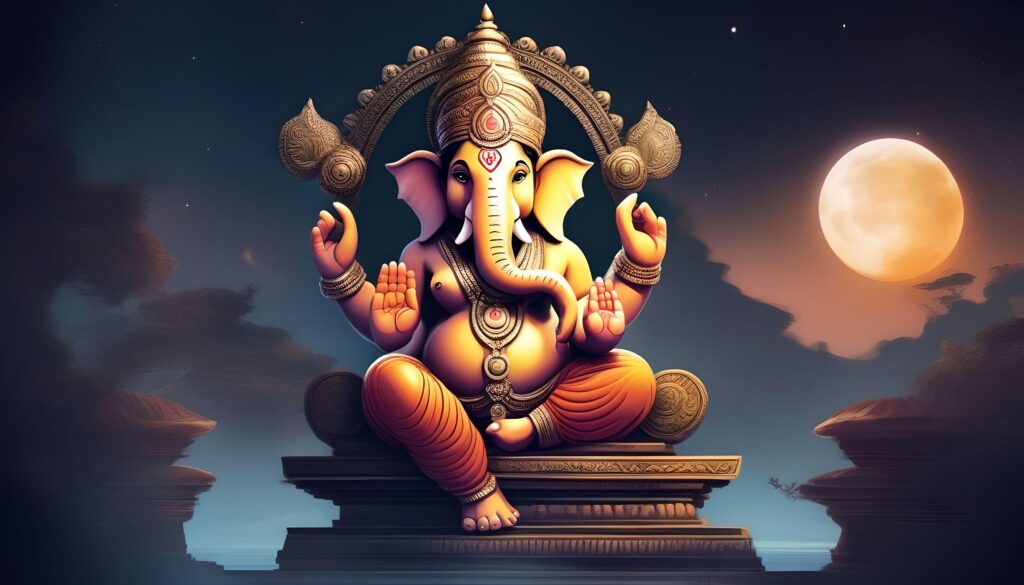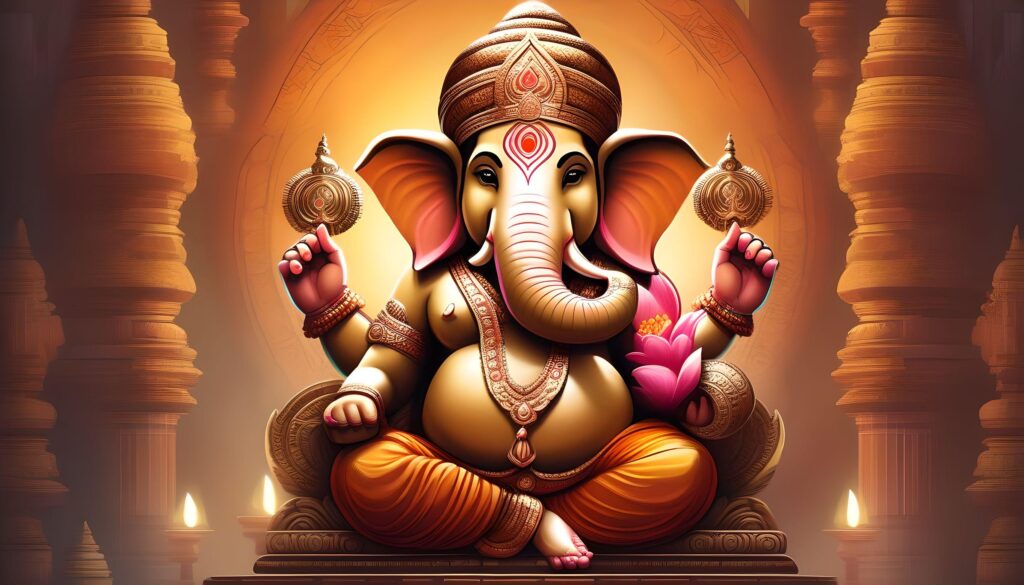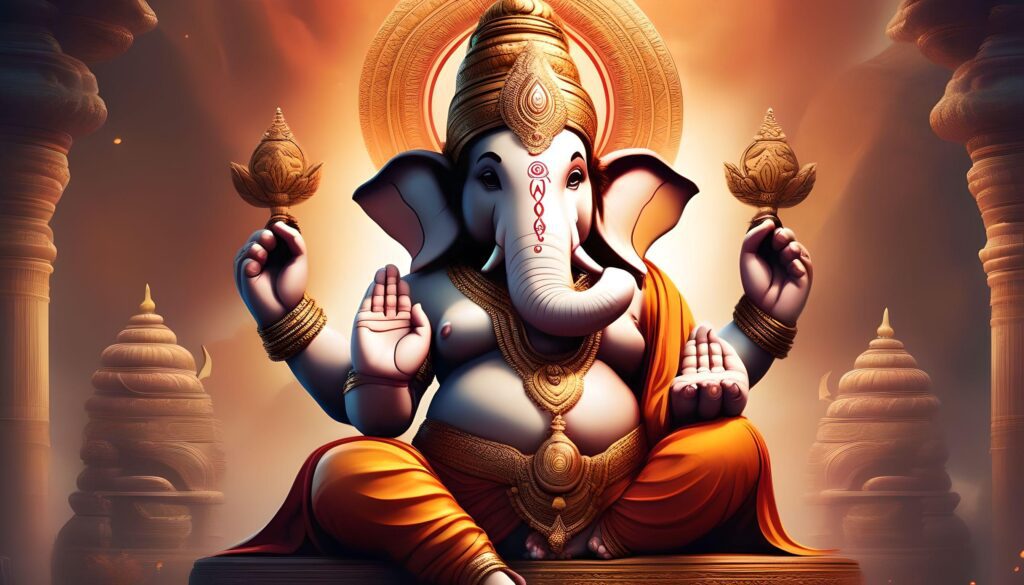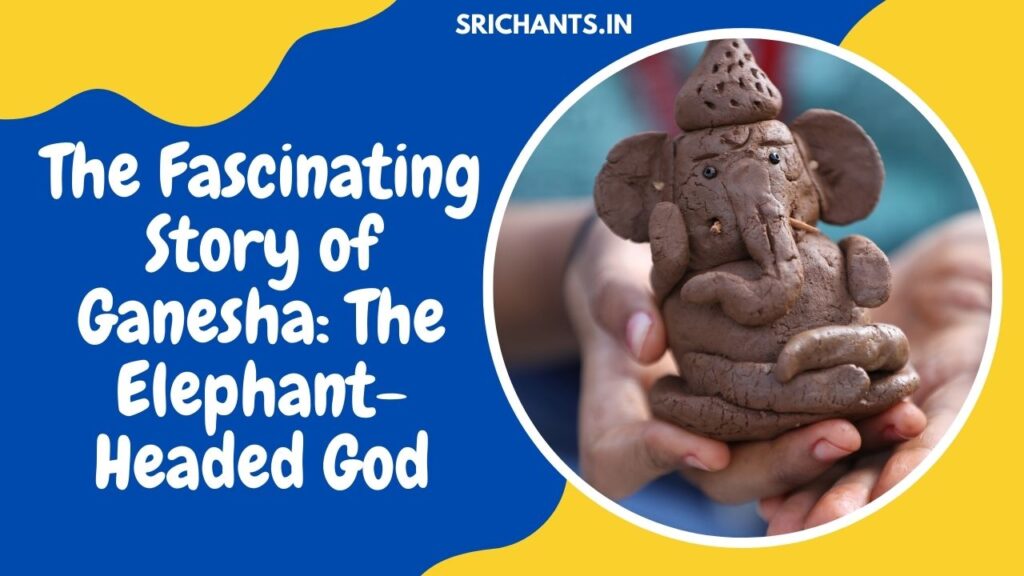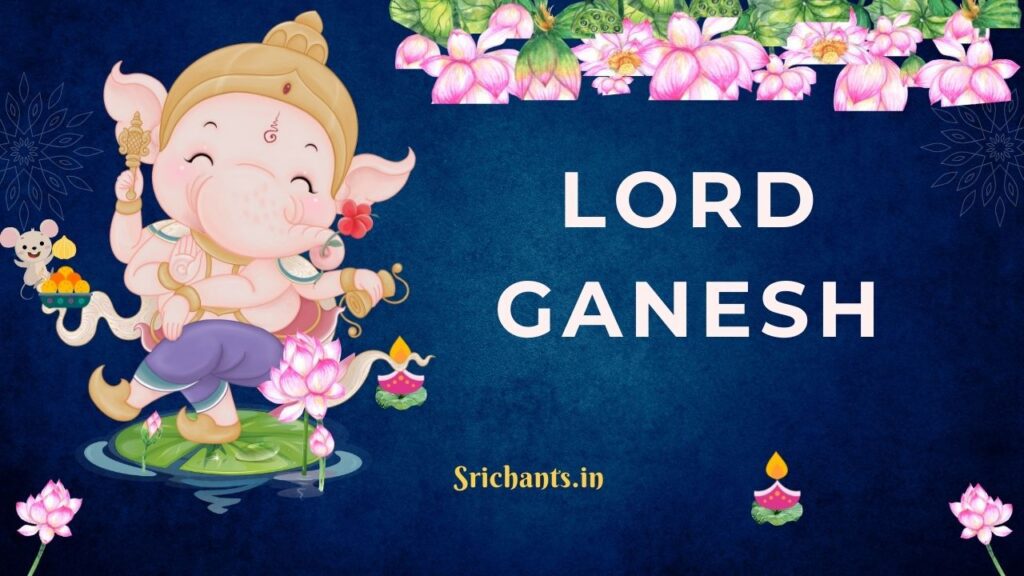Ganesh Chaturthi Puja at home : Step-by-Step Guide
Ganesh Chaturthi is a Hindu festival that commemorates the birth of Lord Ganesha, the deity of auspicious beginnings, over the course of ten days. In Hindu mythology, Lord Ganesha, the younger son of Lord Shiva and Goddess Parvati, is of immense importance. Maharashtra, Goa, Kerala, and Tamil Nadu are the primary states in which the festival is observed; however, it has also acquired popularity in other regions of India.
Date, Time & Shubh Muhurt
Ganesh Chaturthi puja needs to be done on specific date and time only. Please check correct date and time before doing the pooja.
Significance of Ganesh Chaturthi
Lord Ganesha is revered as the deity of wisdom, prosperity, and good fortune, as well as the remover of obstacles. Ganesh Chaturthi is observed to invoke his blessings for prosperity and happiness in life. Aarti, puja, and other rituals are performed with devotion and dedication during the festival. Numerous devotees fast and pray to Lord Ganesha in order to achieve their aspirations and surmount challenges in their lives. He is also referred to as the “God of New Beginnings” and is revered prior to the commencement of any new endeavor, marriage, or housewarming ceremony.
Ganesh Chaturthi History
Ganesh Chaturthi has a rich historical heritage. The festival was publicly celebrated during the reign of Chatrapati Shivaji Maharaj in order to consolidate the populace against the Mughal Empire. Lokmanya Bal Gangadhar Tilak, an Indian economist, nationalist, and freedom fighter, subsequently revived the tradition of commemorating Ganesh Chaturthi. Tilak advocated for the public commemoration of Ganesh Chaturthi in order to raise awareness of Indian culture and to foster unity among individuals of various castes.. The festival has been celebrated with great enthusiasm and fervor ever since.
Goddess Parvati was said to have created Lord Ganesha from the soil on her body, according to legends. While she completed her bath, she requested that Ganesha supervise her restroom. Ganesha prevented Lord Shiva from entering the washroom upon his return, as he was unable to identify his own father. This incensed Lord Shiva, who, in a fit of rage, severed Ganesha’s skull. Lord Shiva restored Ganesha to life by affixing an elephant head to his body after recognizing the error. This is the process by which Lord Ganesha evolved into the elephant-headed deity that is revered by millions.

How to Perform Ganesh Chaturthi Puja at Home
The festival is significantly influenced by the practice of Ganesh Chaturthi Puja at home. It is believed that the performance of the puja with devotion and the observance of the appropriate rituals results in prosperity, success, and blessings. The following is a comprehensive guide to conducting Ganesh Chaturthi Puja at home:
Step 1: Clean the House
Cleaning the home thoroughly is imperative prior to the arrival of Lord Ganesha. A positive and auspicious atmosphere for the puja is fostered by a spotless and organized environment. Begin by organizing and decluttering the residence. Clean all puja items, including the altar or puja room, where the Ganesh idol will be positioned. Decorate the puja area with lights, rangoli, and flowers to greet Lord Ganesha.
Step 2: Bring the Ganesh Idol
Please bring a Ganesh idol to the puja. You have the option of purchasing a clay idol from a nearby store or constructing one at home using turmeric or clay. When employing a clay idol, guarantee that it is environmentally friendly and does not cause any damage to the environment. Position the idol on a spotless puja plate or cloth.
Step 3: Establish the Idol
Establish an altar or elevated platform for the worship of Lord Ganesha prior to its placement. Arrange mango leaves and flowers around the pedestal and spread a clean cloth. Arrange the Ganesh idol on the cloth and embellish it with garlands, flowers, and embellishments.
Step 4: Perform Ganesh Puja
Perform the Ganesh Puja with devotion and follow these steps:
- Avahana: Invoke Lord Ganesha by chanting his mantras and inviting him to bless your residence. As a gesture of gratitude, present the idol with water and blossoms.
- Pratishthapana: The idol is established by reciting the mantras and situating it in its designated location on the altar. Offer prayers and seek the blessings of Lord Ganesha.
- Sthapana: Place a clean cloth or an asana in front of the idol to offer a seat to Lord Ganesha. Chant the mantras and implore Lord Ganesha to accept the seat.
- Ganesh Puja: The primary puja is conducted by offering a variety of items to Lord Ganesha. These include the following: taking a holy bath with water, milk, yogurt, honey, and ghee; applying sandalwood paste and vermilion; offering flowers, fruits, and sweets; igniting incense sticks and lamps; and reciting prayers and mantras.
- Aarti: The Aarti should be performed to conclude the puja. While singing the Aarti melody, light a camphor or ghee lamp and move it in a circular motion in front of the idol. Seek the blessings of Lord Ganesha and express your gratitude.
- Prasad Distribution: Following the Aarti, distribute prasad (blessed food) to all family members and visitors. It is believed that the prasad contains the blessings of Lord Ganesha, which is why it is regarded auspicious to consume.
Step 5: Visarjan (Immersion) of the Ganesh Idol
Perform the Visarjan, or immersion ceremony, on the final day of the festival to send farewell to Lord Ganesha. This entails transporting the Ganesh idol to a nearby aquatic body, such as a river, lake, or ocean, and immersing it. Offer prayers and seek the blessings of Lord Ganesha for a safe and prosperous voyage prior to the immersion. It is crucial to select eco-friendly idols that do not cause damage to the environment.

Eco-friendly Celebrations of Ganesh Chaturthi
In recent years, there has been an increasing trend of celebrating Ganesh Chaturthi in an environmentally friendly manner. This entails the utilization of natural materials, organic decorations, and clay idols that are environmentally friendly. Here are a few environmentally responsible practices that you can implement:
- Clay Ganesha Idols: Choose clay idols over those constructed from non-biodegradable materials, such as plaster of Paris. Clay idols can be submerged in water bodies without causing pollution.
- Natural Decorations: Decorate with natural materials, such as leaves and florals, rather than synthetic or plastic items. Utilize eco-friendly materials and organic colors to create stunning rangolis.
- Organic Offerings: Provide Lord Ganesha with organic fruits, candies, and food items as prasad. Steer clear of plastic plates and utensils and instead choose biodegradable alternatives.
- Water Conservation: Encourage others to follow suit by using minimal water during the puja. Collect the water used for the idol’s bath and use it to water vegetation after the immersion ceremony.
- Community Celebrations: Engage in community events that emphasize environmentally responsible practices. Collaborate with others to raise awareness of the significance of environmental preservation.
By adopting these eco-friendly practices, you can celebrate Ganesh Chaturthi while respecting and protecting the environment.
Final Thoughts
Lord Ganesha’s birth is commemorated during the festivity of Ganesh Chaturthi, which is characterized by joy and unity. By adhering to the comprehensive guide for conducting Ganesh Chaturthi Puja at home and integrating eco-friendly practices, you can enhance the festival’s significance and influence. Embrace the spirit of unity, prosperity, and new beginnings and seek the blessings of Lord Ganesha.
It is important to celebrate responsibly and prevent any negative impact on the environment. May Lord Ganesha bestow prosperity, success, and fulfillment upon you and your loved ones. Wishing you a joyous Ganesh Chaturthi!
